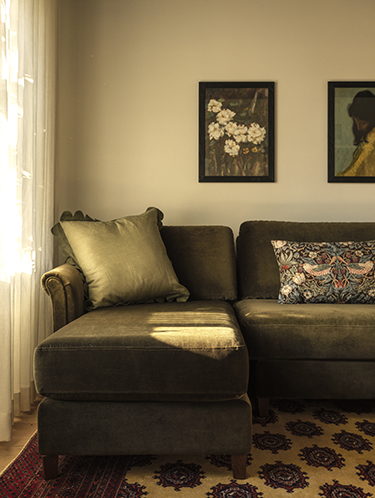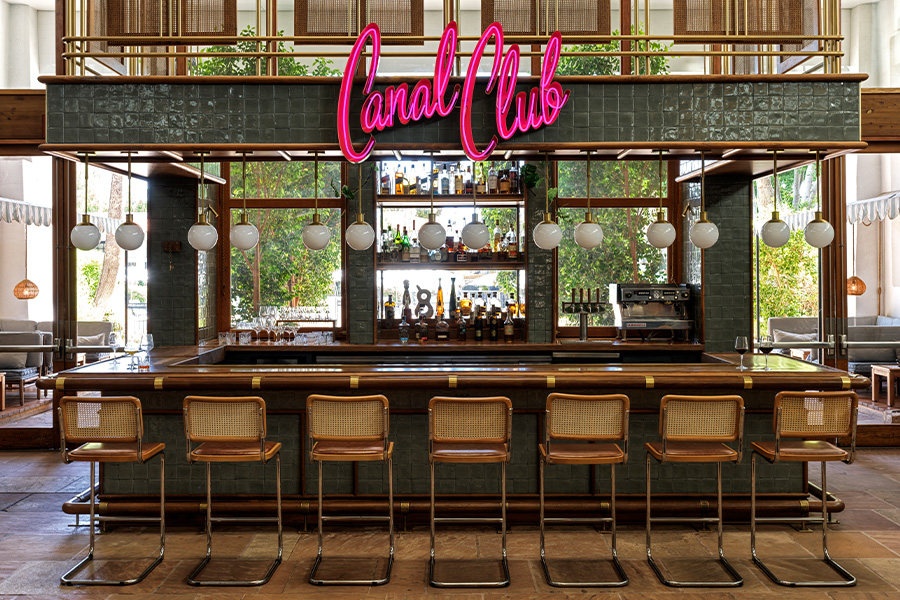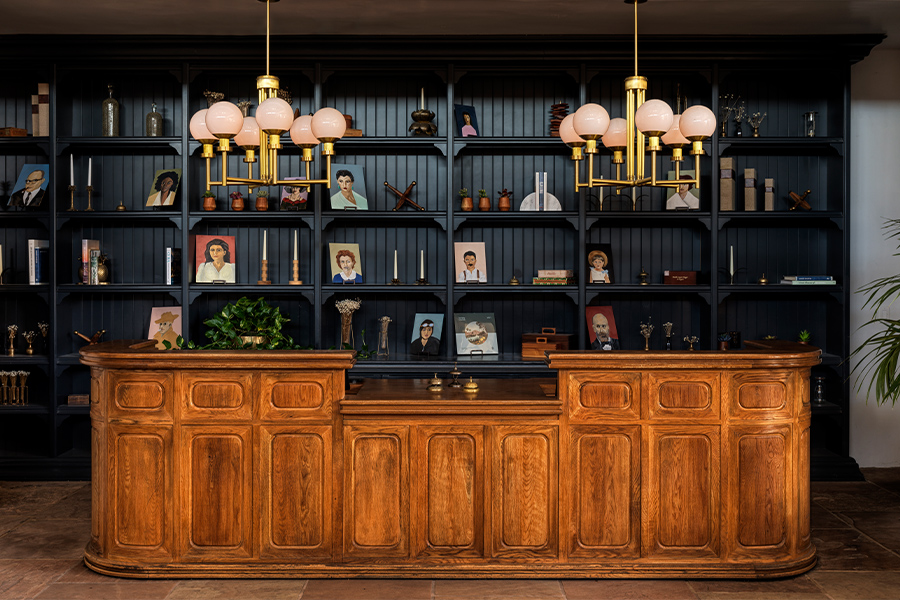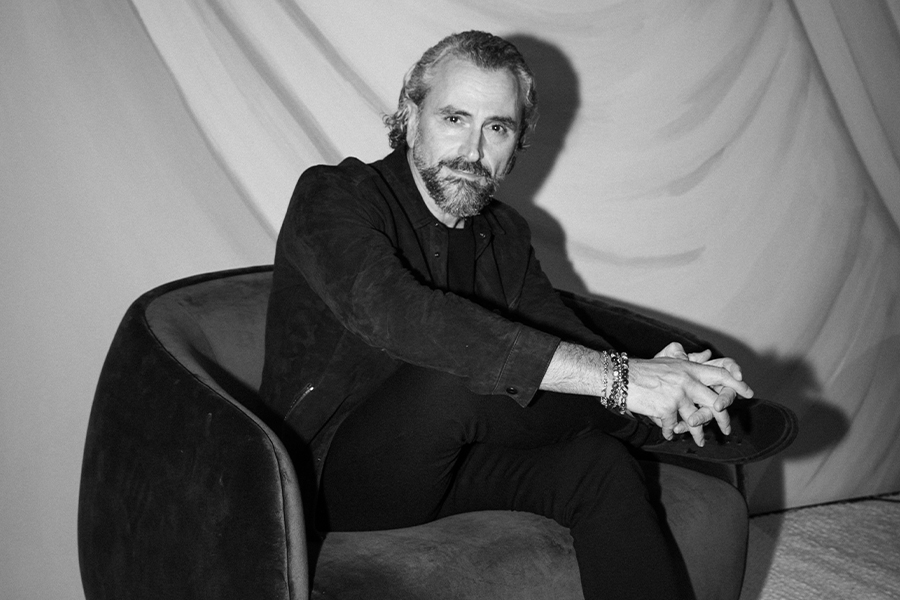John Grossman was immersed in the world of real estate and hospitality from an early age. Born in Santa Monica and raised in Sun Valley, Idaho, he easily navigated different social circles and environments.
His parents, seasoned entrepreneurs, jumped at an opportunity to get into hospitality, acquiring the Arizona Biltmore in Phoenix out of foreclosure during the Resolution Trust Corporation (RTC) and transforming it in the early 1990s. As a result, the two formed Classic Hotels & Resorts, where his father led real estate ventures and his mother took an active role in design, allowing Grossman to witness firsthand the creative and business synergy that shapes iconic destinations.
That early exposure, coupled with a master’s degree in real estate development from the University of New South Wales in Sydney, laid the groundwork for Grossman’s own career. He now leads the company he officially joined in 2010—recently rebranded as Marc & Rose Hospitality—bringing a modern vision to historic properties.
Here, Grossman shares his journey, the power of empathy, and coming full circle with his latest project.
What are your early memories of the hotel business?
John Grossman: Every family meal was a business meeting. Once in a while my mom would say, ‘Can we stop talking about business?’ And then we would have nothing to talk about. This is what we had in common and were excited about. We’d go out of our way to research hotels or restaurants or designers of note. We were consumers, from a design and experiential perspective. I learned so much of what I now practice through those years of observation and apprenticeship, as it were.

Recently reimagined by Post Company, the lobby at La Playa Hotel in Carmel-by-the-Sea, California is centered around a fireplace
What else did you learn from your parents?
JG: I learned to focus on the power of empathy. They would often point out that it’s not about us. We have opinions and those are important, but we aren’t necessarily the consumer of these given experiences. We really think about who’s coming, what does it want to feel like, how does it want to come to life? [We had to] stay humble in terms of what’s being created, and let it be about what the consumer would want. You have to mix that with a real perspective and a point of view so you’re not copying what other people are doing.
Did you consider a different career path?
JG: Not initially. My dad was a first-generation immigrant and entrepreneur. He had a lot of different careers until he was in his late 30s. His whole story about how he got started in real estate in Phoenix is one for the ages. He had a big personality. He loomed large and was a wonderful person, but he demanded excellence and was incredibly driven with a tremendous amount of energy—just relentless. That’s not what scared me; I didn’t necessarily want it for myself. My first job was in San Francisco for an affordable housing developer, and then I spent five years in Australia working for an aged care developer and operator. In both cases it was important for me to do that on my own terms. It was a point of pride for me at the time not to use my family connections.
What changed your mind?
JG: The global financial crisis. I was about to turn 30, my dad was turning 80. I was having a great time [in Sydney], but I made a pivotal decision to move back at the beginning of 2010 and start working for my dad, bringing my own skills and perspective. We had seven or eight years of working together, then the last seven or so we transitioned. I joined as a development project manager and worked my way up within his company and took over. He passed away in September [2024] at the age of 94.

Original artwork is a hallmark of La Playa’s guestrooms
What were the early days like?
JG: My mom was the design director on the first project I did with them, a renovation of what was the Inn at Laguna Beach [in California]. We recently renovated and reopened it as the Casa Loma Beach Hotel. That was bittersweet. I had a lot of memories, reflecting on where I had come from and the times we had together. My mom has advanced dementia, so she doesn’t even know. But the experience was fantastic. It’s a real honor to take care and position these assets that are incredibly well-located in special markets. We’re not buy and sell people. We buy and hold and then continue to reinvent and celebrate.
With a portfolio of 10 hotels and seven F&B outlets, what do you look for in new opportunities?
JG: [Over time we’ve developed] disciplined geographic constraint. A new growth strategy in place requires that properties must be a direct flight from Phoenix, preferably two hours or less. We own and operate everything, so we also view our employees as our most important asset; if they can’t get out to the properties and back, ideally within a day, they’re going to be less likely to stick around for a long time. They have their lives, and we want to honor that. It happens to also be good business because then you can touch the properties. But our core business is the group side with the Arizona Grand and the Scott Resort & Spa in Scottsdale. We’re looking to do more of that. We also have El Chorro Lodge now, a restaurant that eventually will become our first true luxury product in Paradise Valley, Arizona.
Tell us more about El Chorro.
JG: It is one of the most historic assets in effectively the most desirable and valuable location in the Desert Southwest. It’s an approximately 300-seat restaurant and event venue. We do close to 400 events a year. It’s on 13 and a half acres, with roughly eight buildable acres. It’s an iconic opportunity, and if we do it right, it will be something very notable. The first phase is underway, and we are working with AvroKO to do a design overlay with the existing restaurant. The second will be the fully entitled hotel phase [also with AvroKO], which is going to be a little further into the future.
Describe your approach to design.
JG: It’s counterproductive if you select a designer that wants to do something different than the building allows. For example, we just did La Playa Hotel with Post Company. The firm has a strong skillset with historic assets and buildings. At Casa Loma, spearheaded by Electric Bowery, Land, and ORCA, I was impressed with the way they took the Southern California 1960s, ’70s, and ’80s buildings—which aren’t that beautiful to some people—and celebrated aspects that might prove difficult for some [designers].
I’m friendly with a group of four or five designers. I’m waiting to find the right building to suit their skills. I’m very hands-on; I want to be involved in ways that aren’t necessarily welcomed by [all designers]. I like to know them beforehand. There’s a lot of value when we can meander together and don’t have to have a design presentation and approval processes.

The bar at the Canal Club at the Scott Resort & Spa in Scottsdale, designed by AvroKO, channels Havana
How did the rebrand to Marc & Rose come about?
JG: My wife’s an incredible writer, and we work together on a lot of the branding and concept creation. She was integral in the La Playa and Casa Loma design brief and the concept. She and I did Mark & Rose together, and she brought the story to life. The first and most important reason for the rebrand was internal—to attract and retain good talent. [That we] are in control of our destiny as an owner/operator is a unique business proposition. We wanted to tell the story about who we are, why we’re different, why working for us can yield different workplace experiences. [It’s also] messaging about what we stand for and believe in, and it’s connected to [my parents]—Marc and Rose are abbreviations of their middle names. We wanted a brand that didn’t idolize them but is inspired by them.
Many of your properties are old lodges or motor inns that you’ve revitalized. Do you consider that your sweet spot?
JG: The quickest way to a cash-flowing asset is to take something existing and resurrect it. We’re excited by projects with a component we can purchase, stabilize, and not be dragged under with the up front cost burden of development and landholding. Ideally, like in the case of the El Chorro Lodge, it would be a major renovation followed by a major construction project, but in the meantime, it’s a solvent and
a sustainable business.
What else do you have in the works?
JG: We have three pillars. The group business is the core, and we’re actively looking to do more. The second is the more bespoke, supply-constrained leisure market opportunities like Hotel Carmel and Laguna Beach House. The third is the High Country Motor Lodge brand, which we developed in 2017. We made our first purchase in 2019 in Flagstaff, then the pandemic hit and drive-to market brands became fashionable. We saw that as a feeding frenzy and decided not to do any more. It’s still a great brand, and I believe because of our patience and prudence, there’s going to be an opportunity to expand again.
What do you love about the process?
JG: I love how much goes into it. It’s beautiful that you see an opportunity, start with an idea, and the idea turns into a brief, which turns into underwriting. There’s a long line of things, and the road is bumpy. Sometimes you find surprises you have to overcome. If you don’t like that, you probably shouldn’t be in development.

Brass chandeliers hang above the front desk at the Scott, the former Firesky Resort & Spa
This article originally appeared in HD’s February/March 2025 issue.


